Keeping abreast of the latest news is crucial, especially in a dynamic and high-risk environment like the maritime sector. By being well-informed about recent developments, regulations and best practices, employees and companies can learn from each other, improve safety and work more efficiently.
Click and read on to learn more about the latest safety guidelines, innovative techniques and essential measures that contribute to a safe working environment at sea. Stay prepared and well-informed with our insights.
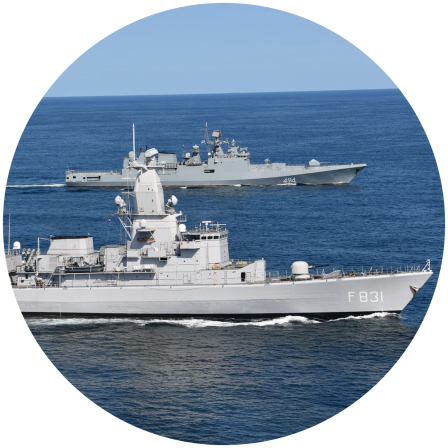
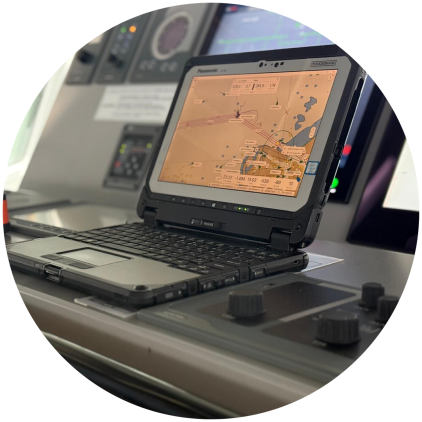
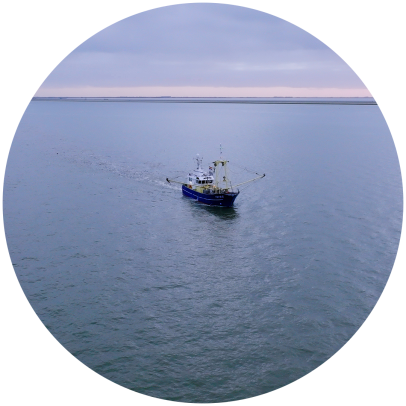
Photo: for illustration purposes
Photo: for illustration purposes
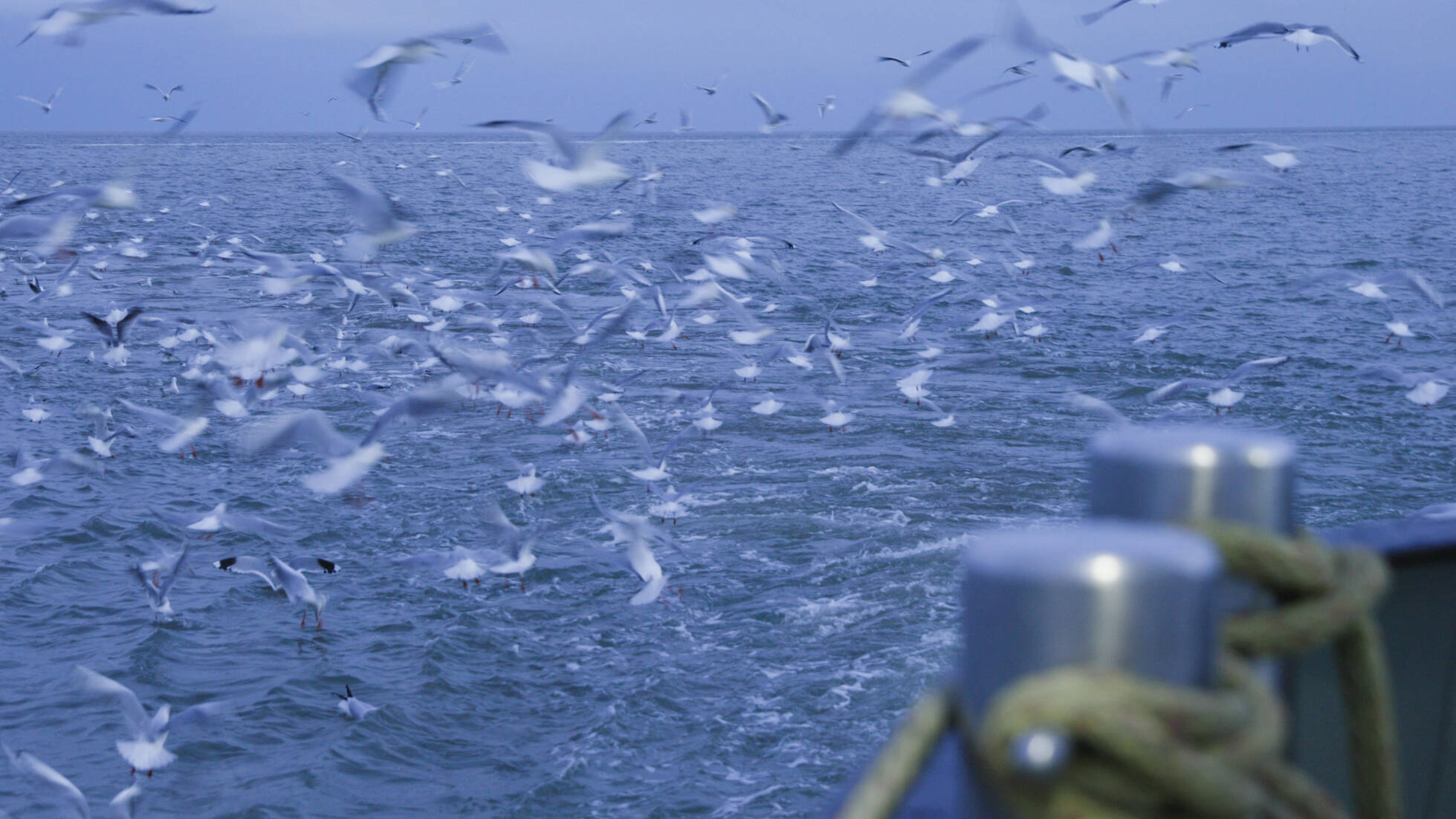
A fisherman has been seriously injured on board his cutter in German waters. He was taken to hospital by helicopter.
The fisherman fell heavily on his cutter off Süderoogsand, north-east of Helgoland, on Thursday morning, 12 June. He sustained multiple injuries.
Rescuers from the German rescue organisation DGzRS were called. The rescue cruiser Eiswette from Nordstrand station set sail immediately. At the same time, a helicopter from NHC Northern Helikopter was called. It brought an emergency doctor and a nurse to the cutter. The victim was treated on board but had to be taken to hospital due to internal injuries.
It proved impossible to hoist the victim from the cutter to the helicopter. He was therefore first transferred to the Eiswette. The condition of the victim is not known at this time.
The cutter has abandoned its voyage.
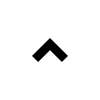
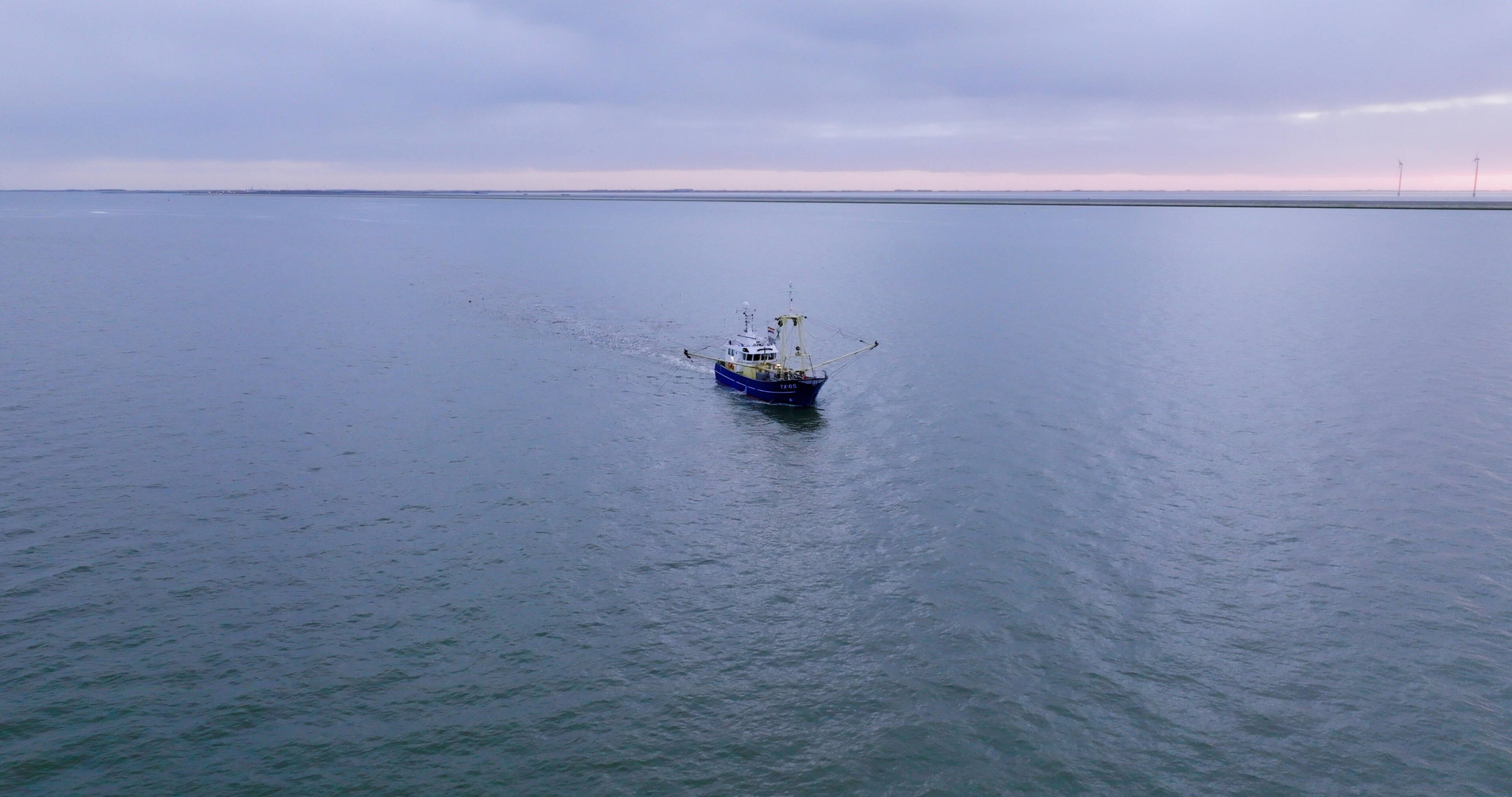
Photo: Loodswezen | PPU system on the bridge
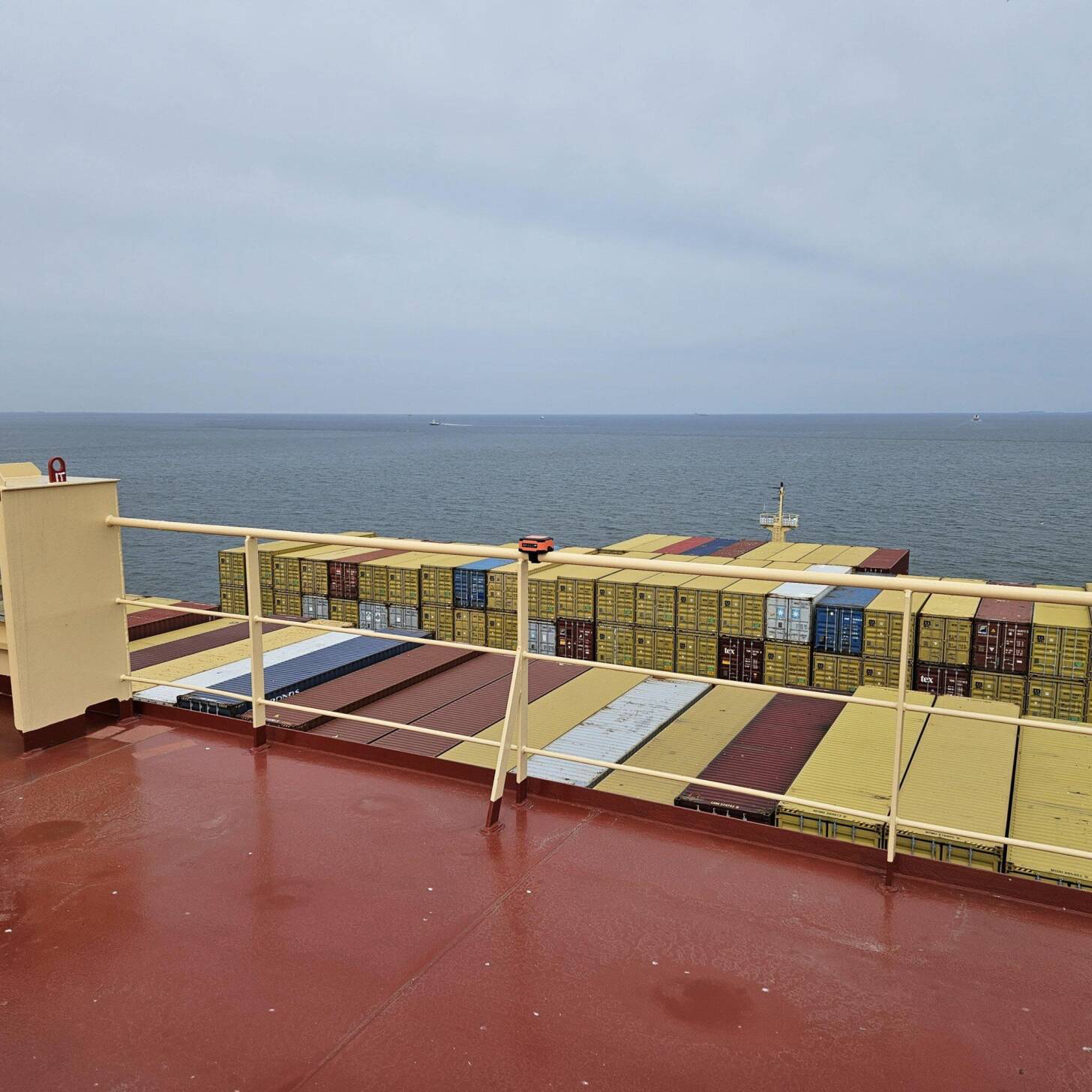
Safe mooring
“The PPU system can determine its position with an accuracy of up to 1.5 centimetres,” says Voskuilen. “We use this high level of accuracy for manoeuvring and mooring at low speeds. The ships we sail with are quite heavy and the jetties can only withstand limited forces. If we moor too quickly, damage can easily occur.”
According to the pilots, the system itself is “vandal-proof” and works in all weather conditions. Even if the case containing the PPU were to fall overboard, the equipment would remain intact.
Preventing conflicts
Hundreds of pilots are already equipped with a PPU. The new version will be rolled out to other pilots in 2026. ‘Not every pilot or ship needs to have this at the moment,’ says Voskuilen. ‘However, the use of the PPU is mandatory in the Eurogeul, Maasgeul and IJgeul.
We use the system for large container ships over 350 metres and LNG ships. When a single ship enters a port, there is often enough space. But on the Westerschelde and in Rotterdam, it is so busy that the margins become very small. To prevent collisions, pilots must have access to this system when the situation requires it.'
But traditional seamanship remains the most important skill. ‘We still look outside. Sometimes you can’t see what’s happening around you with the naked eye, for example in fog,’ says Voskuilen.
Old bridge equipment
The navigation systems on board the countless seagoing vessels served by the Pilotage Service are often not accurate enough for the best pilotage. ‘Some ships are decades old, and so is the equipment on board,’ says Nieuwenhuis.
The intention is that the PPU system will also be used on ships smaller than 350 metres in the near future. ‘Operational resilience is particularly important for channel navigation,’ says Voskuilen. ‘The margins are small when approaching a port. But reliable and independent advice to the captain is always important, of course.’
Major update
The PPU system consists of a laptop or tablet and three GNSS satellite sensors, which are placed on the bridge of a ship. GNSS is a collective term for various satellite navigation systems used worldwide for positioning. The pilot's laptop or tablet provides the complete picture: the map, the ship and the surroundings. “This also includes real-time processing of data on the current depth of the waterway, the weather and the position of other ships,” explains Nieuwenhuis.
Photo: for illustration purposes
Photo: Loodswezen | Impression of the PPU system
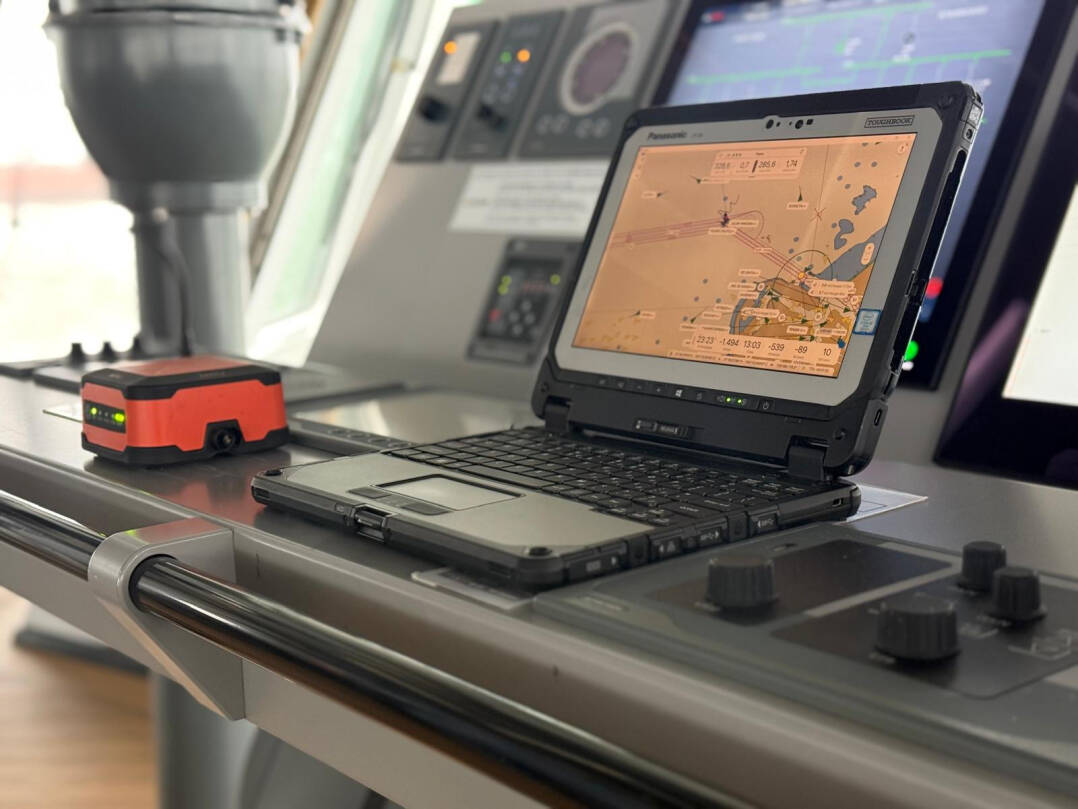
The Dutch Pilotage Service has armed itself in the fight against cybercrime with the updated Portable Pilot Unit (PPU), a fully independent navigation system for pilots in the North Sea. The system now also issues a warning in the event of jamming or spoofing.
Jamming disrupts the reception of a satellite signal, while spoofing involves transmitting false signals that mislead the navigation system. “This is particularly common on the eastern side of Europe, from Russia to the Red Sea,” says registered pilot Arno Voskuilen. “In general, we don't encounter this here in the North Sea, but we want to be prepared and not be taken by surprise. Operational resilience is an important issue.”
If a pilot receives an incorrect position due to interference from cybercriminals or hostile powers, this can obviously have serious consequences. For example, the MSC Antonia ran aground in the Red Sea, presumably due to GPS spoofing.
From our own kitchen
At its core, the PPU system is used for highly accurate and independent positioning of seagoing vessels. It improves port accessibility by enabling safer and smoother navigation. ‘The system is unique not only in the Netherlands, but also worldwide. What’s more, the Pilotage Service has developed the PPU entirely in-house over the past 20 years. This system is the best of its kind,’ says Voskuilen.
against cyber threats in seaports

Photo: Royal Netherlands Navy | In the foreground, HNLMS Van Amstel, behind it Admiral Grigorovich
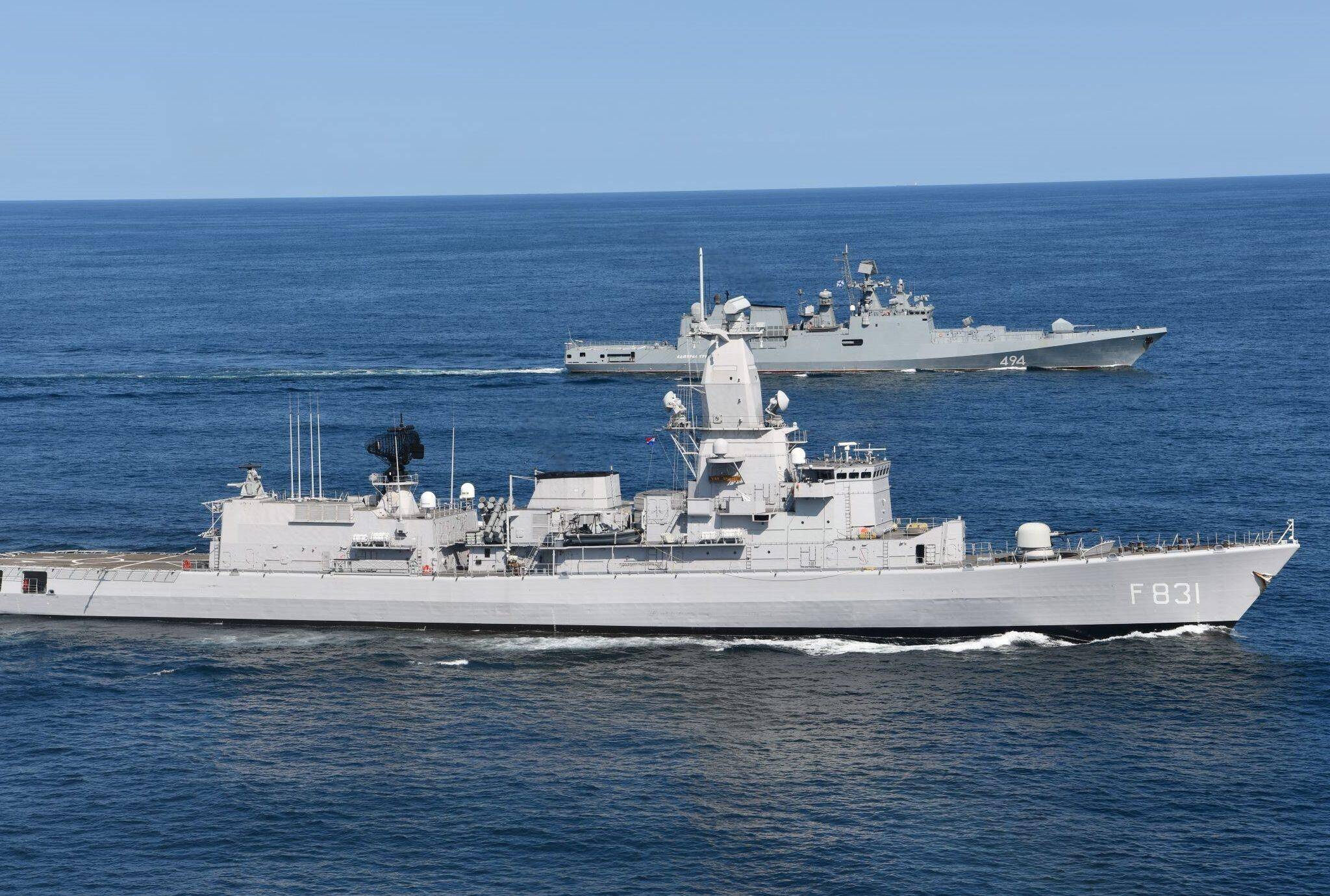
On Friday morning, 20 June, the Dutch navy escorted the Russian frigate Admiral Grigorovich through the North Sea. The frigate Zr.Ms. Van Amstel escorted the Russians, confirmed Defence Minister Ruben Brekelmans.
This year, the Ministry of Defence has already escorted Russian ships away forty times, Brekelmans said after the cabinet meeting. Next week, the NATO summit will be held in The Hague, but the minister does not want to link this to that; he does, however, note that the Russians are present more often. 'We are definitely seeing an increase compared to previous years. Whether this is specifically related to the NATO summit, I don't know, because it has already happened forty times. So it's not surprising that it's happening now. But of course, we also want to send a very clear message just before the NATO summit. There is no point in doing anything in the North Sea, because we are keeping an eye on things.
Espionage
The Russian ship sailed into the economic zone on Friday and was escorted from south to north by the Van Amstel. “So we are showing them immediately that we are keeping an eye on them,” said the minister. 'We don't want them to use that time to spy or even prepare for sabotage.
In connection with next week's summit, several naval vessels are active off the Dutch coast. Commercial and recreational shipping must take into account that, during the NATO summit in The Hague in June, there will be more frequent checks on board to ensure that all information provided is correct. On beaches, such as at Hoek van Holland, warnings have been issued that measures are in place due to the NATO summit.


themselves AGAINST CYBER THREATS in seaports


Keeping abreast of the latest news is crucial, especially in a dynamic and high-risk environment like the maritime sector. By being well-informed about recent developments, regulations and best practices, employees and companies can learn from each other, improve safety and work more efficiently.
Click and read on to learn more about the latest safety guidelines, innovative techniques and essential measures that contribute to a safe working environment at sea. Stay prepared and well-informed with our insights.
Photo: for illustration purposes
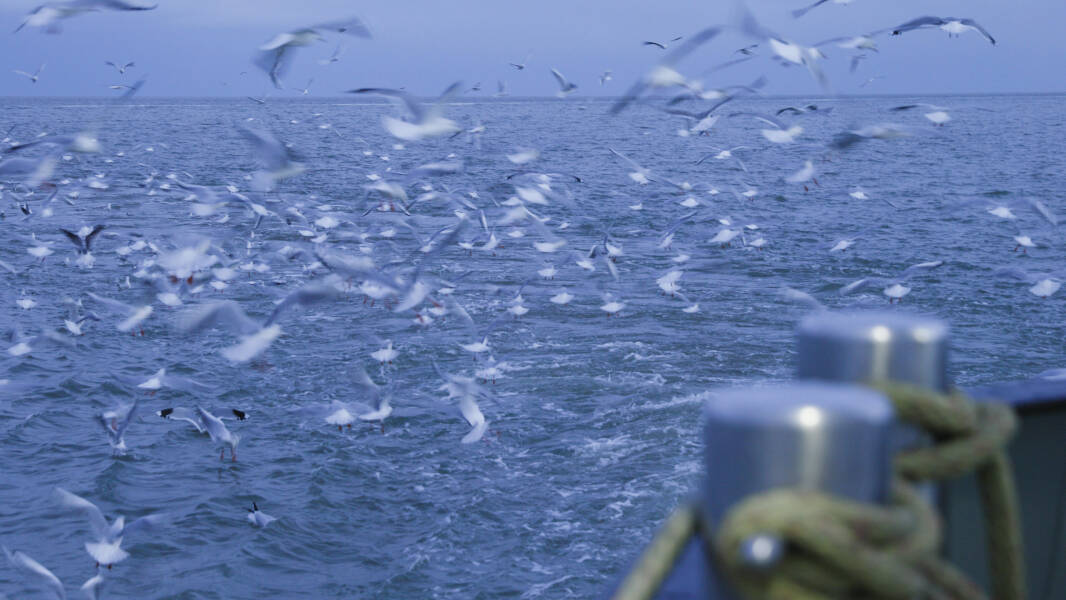
A fisherman has been seriously injured on board his cutter in German waters. He was taken to hospital by helicopter.
The fisherman fell heavily on his cutter off Süderoogsand, north-east of Helgoland, on Thursday morning, 12 June. He sustained multiple injuries.
Rescuers from the German rescue organisation DGzRS were called. The rescue cruiser Eiswette from Nordstrand station set sail immediately. At the same time, a helicopter from NHC Northern Helikopter was called. It brought an emergency doctor and a nurse to the cutter. The victim was treated on board but had to be taken to hospital due to internal injuries.
It proved impossible to hoist the victim from the cutter to the helicopter. He was therefore first transferred to the Eiswette. The condition of the victim is not known at this time.
The cutter has abandoned its voyage.


Safe mooring
“The PPU system can determine its position with an accuracy of up to 1.5 centimetres,” says Voskuilen. “We use this high level of accuracy for manoeuvring and mooring at low speeds. The ships we sail with are quite heavy and the jetties can only withstand limited forces. If we moor too quickly, damage can easily occur.”
According to the pilots, the system itself is “vandal-proof” and works in all weather conditions. Even if the case containing the PPU were to fall overboard, the equipment would remain intact.
Preventing conflicts
Hundreds of pilots are already equipped with a PPU. The new version will be rolled out to other pilots in 2026. ‘Not every pilot or ship needs to have this at the moment,’ says Voskuilen. ‘However, the use of the PPU is mandatory in the Eurogeul, Maasgeul and IJgeul.
We use the system for large container ships over 350 metres and LNG ships. When a single ship enters a port, there is often enough space. But on the Westerschelde and in Rotterdam, it is so busy that the margins become very small. To prevent collisions, pilots must have access to this system when the situation requires it.'
But traditional seamanship remains the most important skill. ‘We still look outside. Sometimes you can’t see what’s happening around you with the naked eye, for example in fog,’ says Voskuilen.
Old bridge equipment
The navigation systems on board the countless seagoing vessels served by the Pilotage Service are often not accurate enough for the best pilotage. ‘Some ships are decades old, and so is the equipment on board,’ says Nieuwenhuis.
The intention is that the PPU system will also be used on ships smaller than 350 metres in the near future. ‘Operational resilience is particularly important for channel navigation,’ says Voskuilen. ‘The margins are small when approaching a port. But reliable and independent advice to the captain is always important, of course.’
Photo: Loodswezen | PPU system on the bridge
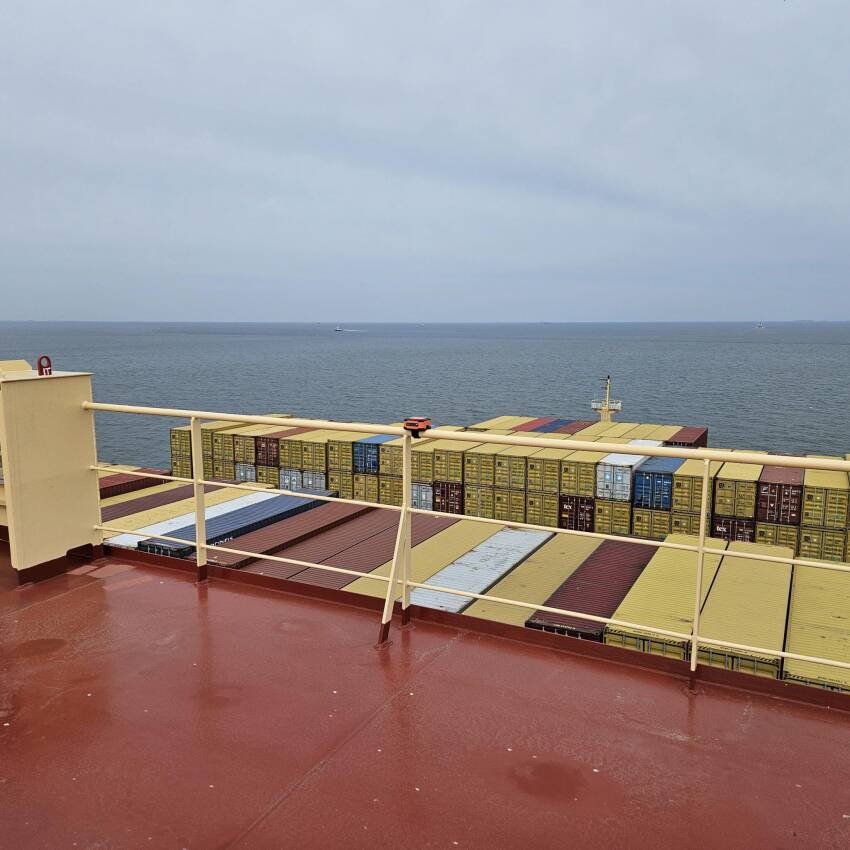
Photo: Loodswezen | Impression of the PPU system
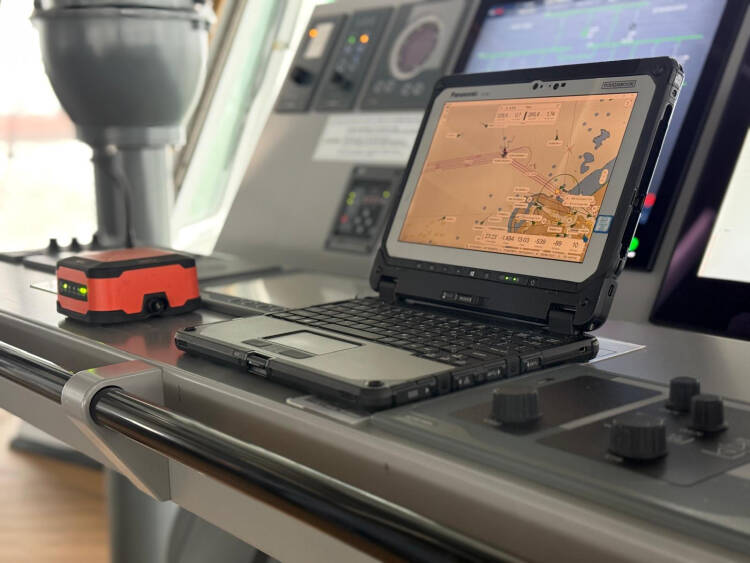
Major update
The PPU system consists of a laptop or tablet and three GNSS satellite sensors, which are placed on the bridge of a ship. GNSS is a collective term for various satellite navigation systems used worldwide for positioning. The pilot's laptop or tablet provides the complete picture: the map, the ship and the surroundings. “This also includes real-time processing of data on the current depth of the waterway, the weather and the position of other ships,” explains Nieuwenhuis.
The Dutch Pilotage Service has armed itself in the fight against cybercrime with the updated Portable Pilot Unit (PPU), a fully independent navigation system for pilots in the North Sea. The system now also issues a warning in the event of jamming or spoofing.
Jamming disrupts the reception of a satellite signal, while spoofing involves transmitting false signals that mislead the navigation system. “This is particularly common on the eastern side of Europe, from Russia to the Red Sea,” says registered pilot Arno Voskuilen. “In general, we don't encounter this here in the North Sea, but we want to be prepared and not be taken by surprise. Operational resilience is an important issue.”
If a pilot receives an incorrect position due to interference from cybercriminals or hostile powers, this can obviously have serious consequences. For example, the MSC Antonia ran aground in the Red Sea, presumably due to GPS spoofing.
From our own kitchen
At its core, the PPU system is used for highly accurate and independent positioning of seagoing vessels. It improves port accessibility by enabling safer and smoother navigation. ‘The system is unique not only in the Netherlands, but also worldwide. What’s more, the Pilotage Service has developed the PPU entirely in-house over the past 20 years. This system is the best of its kind,’ says Voskuilen.
against cyber threats in seaports

Photo: Royal Netherlands Navy | In the foreground, HNLMS Van Amstel, behind it Admiral Grigorovich
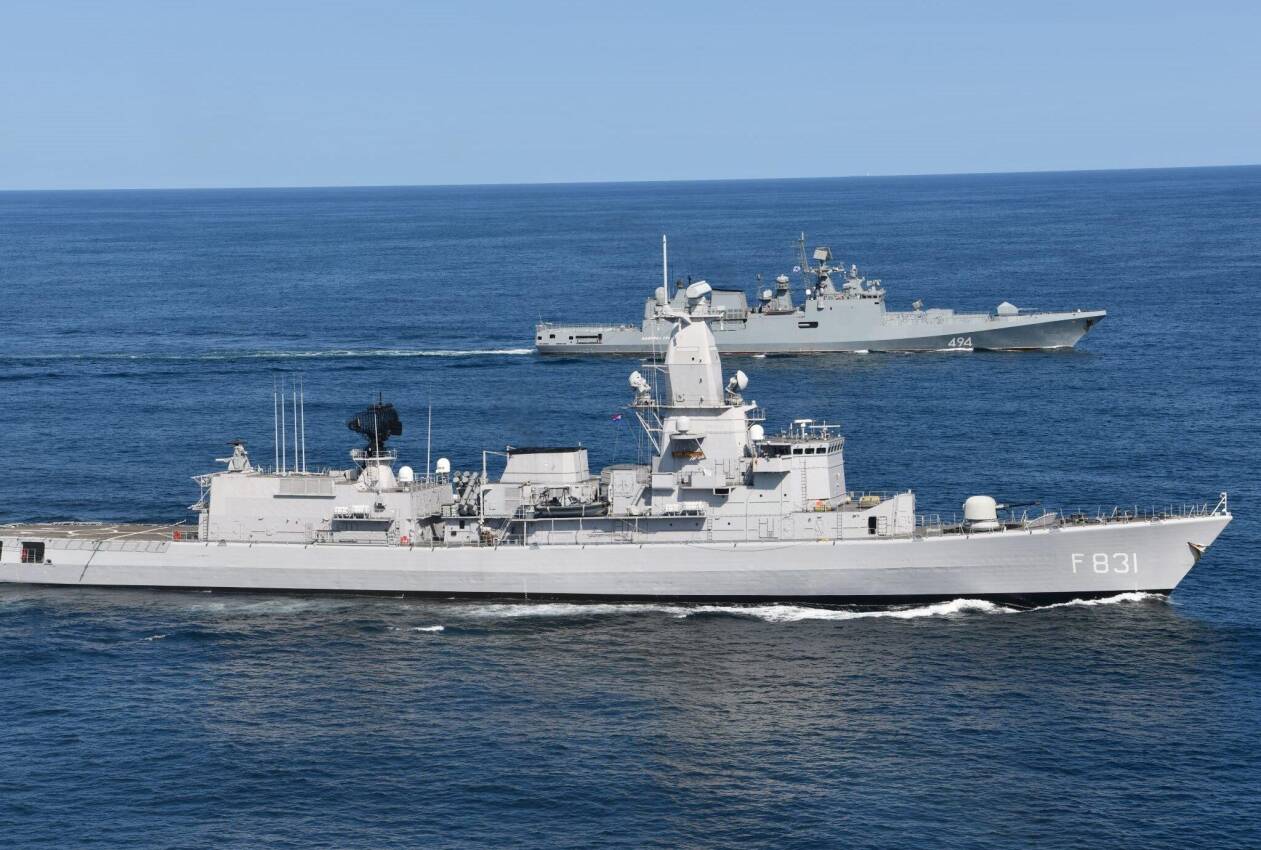
Forse update
Het PPU-systeem bestaat uit een laptop of tablet en drie GNSS-satellietsensoren, die op de brug van een schip worden geplaatst. GNSS is een verzamelnaam voor diverse satellietnavigatiesystemen die wereldwijd worden gebruikt voor plaatsbepaling. De laptop of tablet van de loods geeft het totaalplaatje: de kaart, het schip en de omgeving. ‘Hierbij worden ook data over de actuele diepte van de vaarweg, het weer en de positie van andere schepen real-time verwerkt’, legt Nieuwenhuis uit.
On Friday morning, 20 June, the Dutch navy escorted the Russian frigate Admiral Grigorovich through the North Sea. The frigate Zr.Ms. Van Amstel escorted the Russians, confirmed Defence Minister Ruben Brekelmans.
This year, the Ministry of Defence has already escorted Russian ships away forty times, Brekelmans said after the cabinet meeting. Next week, the NATO summit will be held in The Hague, but the minister does not want to link this to that; he does, however, note that the Russians are present more often. 'We are definitely seeing an increase compared to previous years. Whether this is specifically related to the NATO summit, I don't know, because it has already happened forty times. So it's not surprising that it's happening now. But of course, we also want to send a very clear message just before the NATO summit. There is no point in doing anything in the North Sea, because we are keeping an eye on things.
Espionage
The Russian ship sailed into the economic zone on Friday and was escorted from south to north by the Van Amstel. “So we are showing them immediately that we are keeping an eye on them,” said the minister. 'We don't want them to use that time to spy or even prepare for sabotage.
In connection with next week's summit, several naval vessels are active off the Dutch coast. Commercial and recreational shipping must take into account that, during the NATO summit in The Hague in June, there will be more frequent checks on board to ensure that all information provided is correct. On beaches, such as at Hoek van Holland, warnings have been issued that measures are in place due to the NATO summit.
